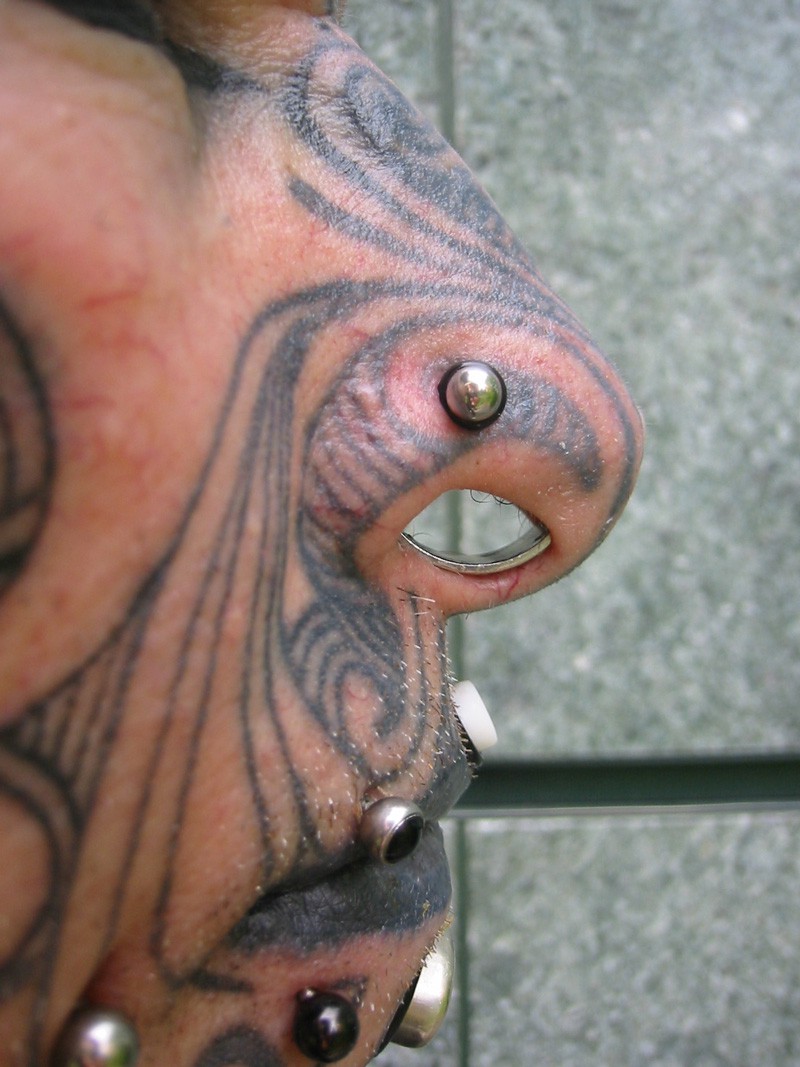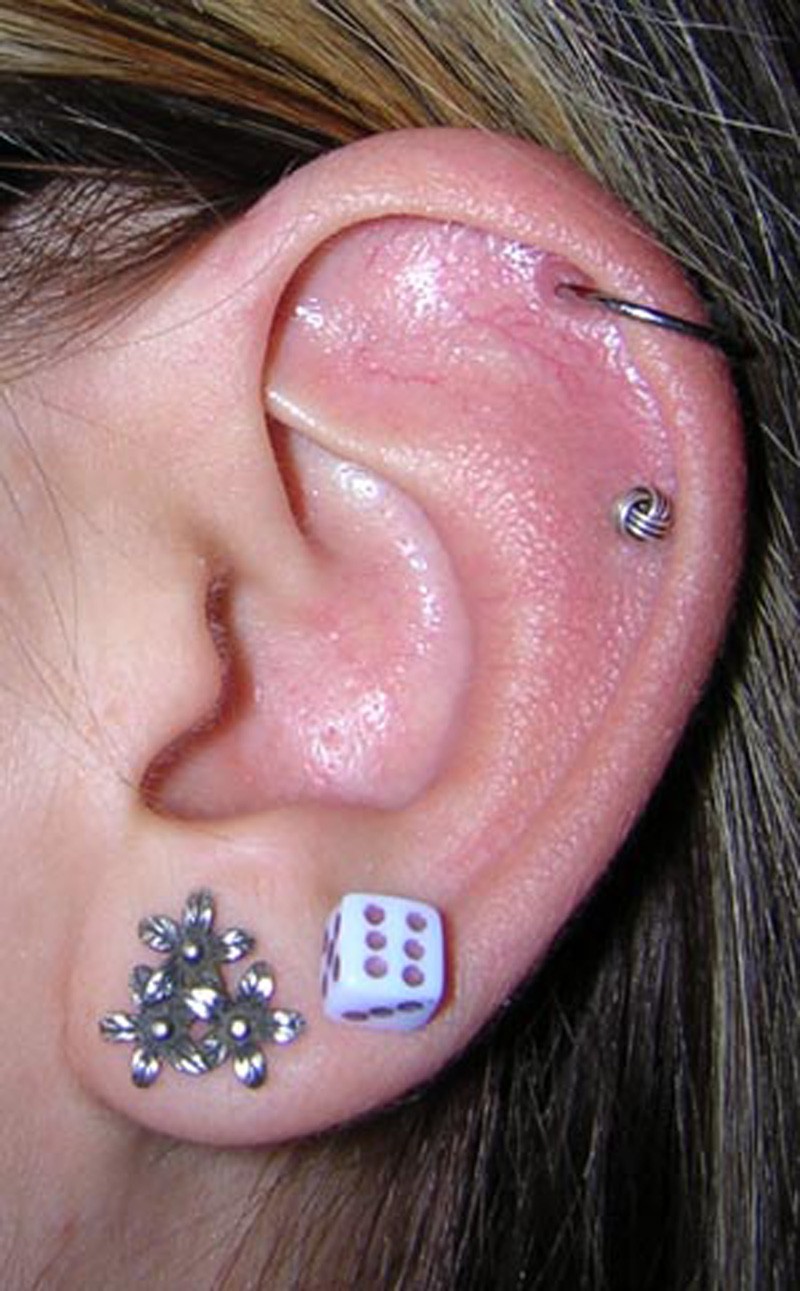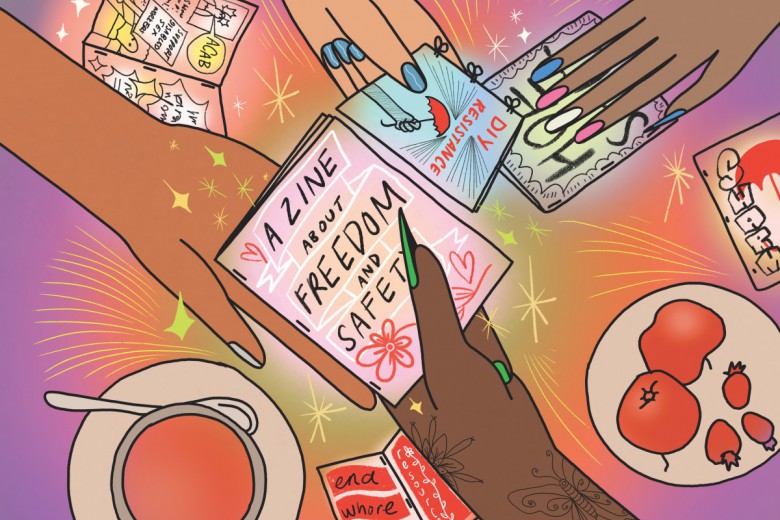
It all began when Jeremy boarded a plane to attend an event that remains shrouded in secrecy.
“I don’t know if you’ve ever seen the movie Fight Club, but this convention runs under basically the same rules: it’s one that you don’t name or talk about outside of the actual convention itself.” The unnamed convention is an international invitation-only event advertised on the Body Modification website. In its infancy, it played host to 35 attendees, all sporting large-scale body modifications and wishing to assist in or undergo further surgical alterations during the three-day event.
Jeremy is known as a “cutter,” and cutting refers to flesh. Jeremy has performed modifications ranging from the splitting of the head of the penis to labia reductions and removals, and he will be performing his first castration next month. He prefers to think of himself as a “body modification practitioner” but accepts the title “cutter” as a catch phrase used by those outside of the body modification community. “Personally the term practitioner seems to speak more of modern-day cutters to me. There is much more research and focus on blood-borne pathogens and cross-contamination avoidance,” he says.
Jeremy, a piercer and brander by trade, spent the last 14 years perfecting his surgical skills and learning proper sterilization techniques. “I’m not the most qualified person to be doing this type of work. Doctors are. But doctors are reluctant to do it, so that leaves people like me.”
Although he doesn’t seem to know it, Jeremy is part of a community that is—literally—on the cutting edge of gender theory. These underground, illegal operations seek to reconfigure female and male bodies in ways that make society squirm, challenging our most deeply held traditional notions of beauty and gender.
“One is not born, but rather becomes, a woman,” wrote Simone de Beauvoir.


The same can be said for the social construction of man. Gender is a social construct. The Oxford English Dictionary defines it as “the state of being male or female (with reference to social or cultural differences).” Many of these differences, of course, are reflected in the physical characteristics of the female and male body. But a person’s physical appearance may not match their mental construct of what a desirable “man” or “woman” should look like—and rather than adjusting their notions of male or female to fit the reality, increasing numbers of people are choosing to modify their bodies in an effort to conform to accepted standards of femininity and masculinity.
Mainstream body modification provides some essential tools of this trade, and has gained widespread social acceptance. Ear piercing, hair dying, cosmetics, coiffure, circumcision, plastic surgery, tattooing, coloured contact lenses, crash diets, bodybuilding, botox, steroids, orthodontic work and hair implants are all marketed to men and women to aid them in conforming to the socially constructed physical ideal—thereby further distorting what it means to be (or to look like) an attractive woman or man.
The number of people undergoing cosmetic surgery, for instance, is on the rise. According to the American Society of Plastic Surgeons, the number of procedures performed in the United States in 2005 shot up eleven percent over the previous year, while the number of cosmetic surgery for youths 18 and younger rose almost ten percent between 2000 and 2005.
Not all forms of body modification are viewed equally, however. Unlike the many socially accepted forms of body modification, which serve to reinforce conventional gender norms and beauty standards, non-mainstream body modification often challenges or undermines these social norms, forcing us to question our assumptions about what is “normal” or desirable. As a result, people undergoing such modifications are often demonized and viewed as psychologically ill or social misfits. Social theorist Victoria Pitts reviewed 35 media articles written on contemporary body modification and found that “a significant number of them present body modification as a social problem.”
Admittedly, non-mainstream body modification is not for the faint of heart. No one ever said the process of re-crafting the human body was pretty. Labia reductions, labia removals, clitoral hood splits and the bisection of the underside of the penis are just a few of the surgical operations I encountered while browsing an online encyclopedia of terms. Extreme forms of gender nullification also exist that can include, for women, removing the uterus, ovaries, breasts, and genitals and for men the testicles, penis and nipples. With these operations the culturally defining physical traits of masculinity and femininity vanish as well. One can view nullification as either removing the physical manifestations of gender or giving way to a new form of gender.
It makes sense, therefore, that these types of operations are the most threatening to our culture, not to mention our psyche. However, the eunuch (a term referring to a castrated male) was a cultural norm for thousands of years—most notably as part of the baroque musical tradition—and has only lost vogue during the last few centuries.
When people are first introduced to the topic of body modification, the question isn’t long in coming: Why would someone choose to mutilate their body in such extreme ways? The word mutilation, however, is of course only reserved for operations that fall outside of mainstream sensibilities. When, for instance, was the last time you heard liposuction referred to as “mutilation”? Stemming from the Latin mutilare, meaning to maim, the word refers to permanent damage or disfigurement done to the body. Could one not argue that plastic surgery does the same thing? The important difference, of course, is that plastic surgery is about obedience to mainstream beauty norms.
Thus, the online publication The Body Modification E-zine declares its commitment “to never judge one body modification or manipulation activity as more ‘right’ than another and never succumb to public (mainstream or non-mainstream) pressure to draw this line.” The community cannot, however, be accused of failing to articulate the risks inherent in body modification. The website warns of the physical dangers of body modification activities and also states that Body Dysmorphic Disorder can play a role in driving individuals to seek body modifications, and for this, the community advocates therapy and medical help. Body Dysmorphic Disorder is a serious mental illness involving an obsessive/compulsive revulsion at some aspect of one’s own physical appearance. The disorder has been correlated with high suicide rates.
James chose to be castrated by a “cutter” when he was 21 years old.
“I went from this manly man to a very emotional PMSing guy. I consider myself a eunuch all the way.”
James explains his castration as something that is not related to his body modification interests. “As a child I was sexually molested, and as a sexually molested child I had a hatred of my genitals. With puberty it got to the point that the testosterone was ruining my life and I wanted to go out and physically hurt someone.” James visited five surgeons with referrals from therapists explaining the psychological reasoning behind his desire to be castrated, and he was refused each time. “The surgeons said, ‘no, we’re still not going to take you because we believe this is self-mutilation.’”
After five years of looking for professional help, James sought solutions outside of the medical community. “To be honest with you, when a chance came up for me to be cut, I took that opportunity.” James’ castration was performed in “a run-down, sleazy hotel room because I didn’t want any attention. John (the cutter) was willing to do it for free if I bought the supplies. John reassured me that he wasn’t in this for the procedure.” While some other cutters perform these procedures to “get their kicks,” James says John was legitimately trying to help, and tried to dissuade him from having the surgery done unless it was absolutely necessary.
According to Jeremy, the majority of people who get castration done “have strong testosterone problems and are mostly seeking help. A lot of them have been to their doctors to seek help and they’re not really getting relief. I think most or all of these people would go to doctors for procedures if they would perform them.”
James describes his change in sexual preference and behaviour after undergoing castration. “I use to prefer guys but now I like both guys and girls. I can relate to women better now. I think my sexuality has been transformed.”
For the good?
“You bet. I find myself cuddling more and caressing after having sexual interaction with someone. I can relate to a woman. Getting off is no longer a driving force.” James has altered his gender from that of a man to a eunuch.
Kerri, a mother of two, had her vaginal hood surgically split and intends to undergo full labia removal.
“When I was 21 I had my vaginal hood surgically split. Having the clitoral shaft available to stimulation was unbelievable. Knowing that it was done by my own consent and desire, of my own free will, added another layer of sensuality to it. Being able to put on a skirt and heels and walk down the street with a surgical sexual modification that no one else knows about somehow empowers you within your own femininity. I suppose it’s the same reason some women CEOs wear garters under their suits.”
“Just because people can’t relate to it, doesn’t mean that it’s wrong.”
Kerri refers to herself as “the June Cleaver of modification.”
“I’m a stay-at-home mom. I take care of my kids, I cook, clean, have dinner on the table for my husband when he gets home. I just feel beautiful and comfortable within the skin I’ve chosen to wear.”
Kerri describes how her modifications altered her identity as a woman: “I’m strong and I have the ability to become more feminine with my modifications than without. I once took out all of my facial piercings and I felt distorted and ugly, a shell of what I should have been. The more modifications I gain are what make me beautiful.”
According to Victoria Pitts, women like Kerri are “claiming authority of [the] body and rewriting its identifications.” Body modification serves as a form of “resistance against the normative ‘lifetime of messages’ about needing to reach a beauty ideal. As well as self-ownership and renegotiated sexuality, beauty is thus a target for reclamation (“Reclaiming the Female Body: Embodied Identity Work, Resistance and the Grotesque,” published in Body & Society, 1998).
Body modification is a practice that is as old as human beings themselves, probably first occurring shortly after humans became consciously aware of their appearance. In anthropologist James Myers’ article “Non-mainstream Body Modification: Genital Piercing, Branding, Burning, and Cutting” (published in Journal of Contemporary Ethnography, 1992), Myers studied non-mainstream modification in US West Coast cities over a period of two years.
“My observations and conclusions regarding non-mainstream body modification run counter to the general public’s assessment that people so-involved are psychological misfits bent on disfigurement and self-mutilation,” says Myers. “None of the people I interviewed, however deep and varied their involvement in body alteration, fit the standard medical models for ‘self mutilation.’” Myers discovered many justifications behind non-mainstream body modifications, including sexual enhancement, pain, rights of passage, affiliation, aesthetic, trust/loyalty, and shock value.
Anthropologists have extensively studied non-Western, non-mainstream body modification, while Western non-mainstream body modification in contemporary society has been largely unexamined—even taboo. Non-mainstream body modification may be acceptable in the pages of National Geographic, but not in People or Time. As one of Myers’ anthropology graduate students put it, “As long as the tits and pricks being pierced are brown, OK—but if they’re white, no way!”
Ashley Walters is a freelance writer currently residing in Toronto.





